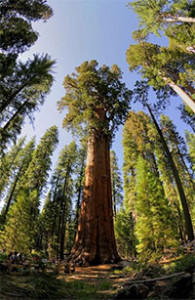
Data Platform Tracks Deforestation, Carbon Emissions

As world leaders meet in Paris this week to work out a plan to slow global warming, new data tools are emerging to at least get a handle on the extent of the climate change challenge.
One key metric in the climate debate is the rate of global deforestation. The problem has become especially acute in the Amazon Rainforest, widely considered by climatologists to be the “lungs of the planet.”
A global forest-monitoring network called Global Forest Watch (GFW) gathers data on how much carbon is locked in tropical rainforests and how much is lost each year to deforestation. The GFW Climate platform revealed that greenhouse gas emissions from tropical deforestation between 2001 and 2013 exceeded Russia’s annual emissions for 2012.
That works out to 2,270 million metric tons of carbon dioxide annually, reports program sponsor, the World Resource Institute (WRI).
Among the potential users of the deforestation data tool are governments and donors who could use it to compare data and explore trends in order to funnel government and donor support to where it can do the most good.
WRI noted that the data platform also could help boost compliance with climate initiatives like the New York Declaration on Forests, which aims to cut global deforestation in half by 2020.
The mapping platform and analysis tool aims to shed more light on the climate effects of tropical deforestation. The beta version of GFW Climate was launched this week with the initial goal of providing benchmarks for measuring a country’s carbon emissions. It also tracks progress towards meeting goals for reducing carbon emissions.
The platform also includes a large database and analysis tools designed to help decision-makers slow deforestation to reduce carbon emissions.
Promoters of the tool noted that it addresses the need to consolidate international statistics on deforestation. Moreover, the data platform’s “focus on greenhouse gas emissions, rather than just the area of deforestation, will help prioritize interventions for some of the world’s most carbon-dense and often ecologically valuable forests, ensuring that reductions in forest loss result in gains for the climate,” proponents said.
The tool also allows user to explore forest landscapes and analyze carbon data on interactive maps. Forest and carbon data are presented on interactive dashboards in the form of customized reports. Different regions and countries can be compared while visualizations show how carbon emissions from tropical deforestation have grown over the last 15 years or more.
The GLW Climate platform is predicated on the idea that the more information made readily available via data analysis and visualization, the better the odds of reducing carbon emissions via improved forestry management.
With little hope of a binding climate deal in Paris, proponents hope new analytics tools like the new climate data platform might help the decision-makers see the forest for the trees.
Recent items:
Seeing the Forest For the Trees With Analytics
Climate Researchers Crunch Data on Weather Extremes






























